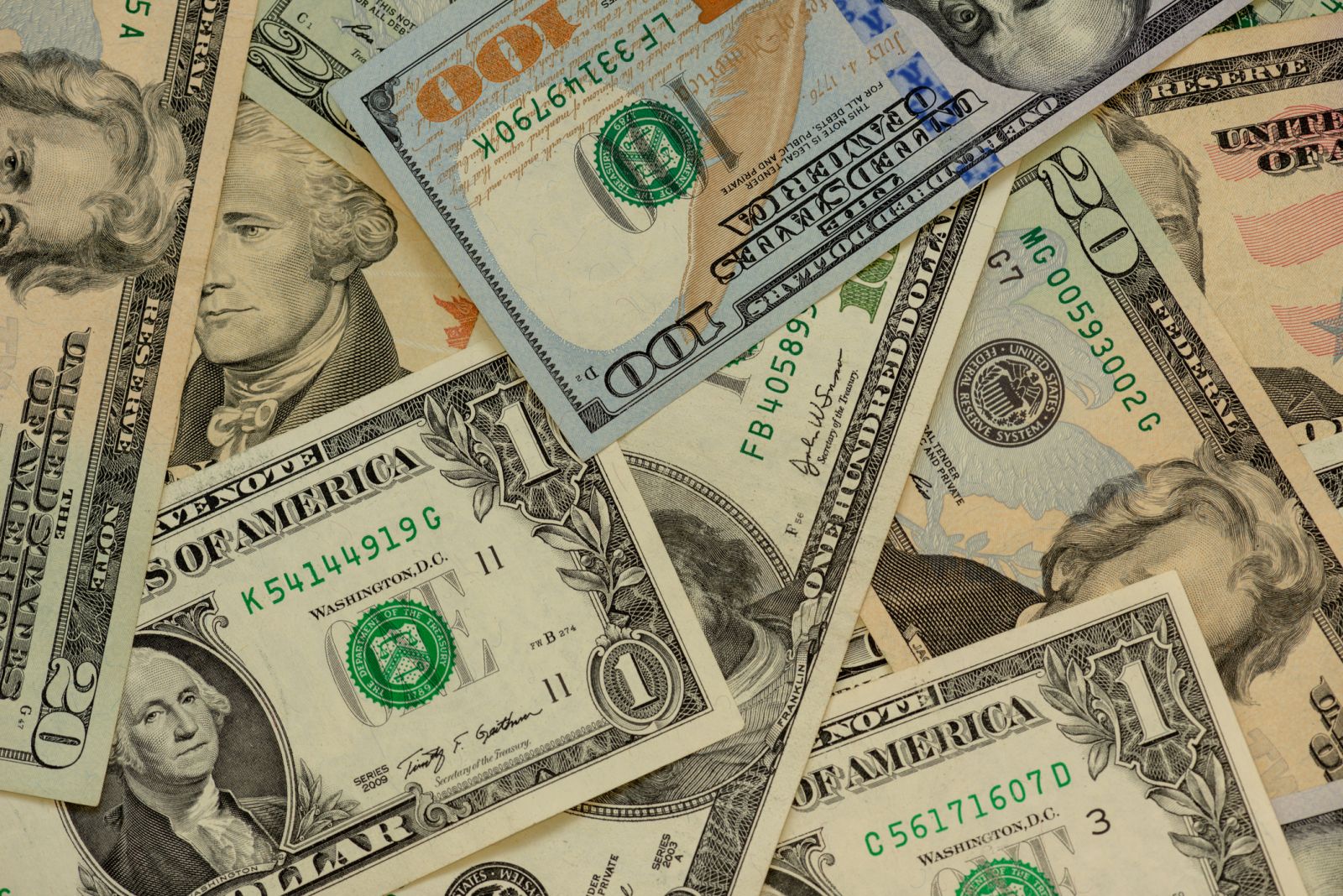Dollar Tumbles as Bond Yields Slide and the Yen Strengthens

The dollar index (DXY00) today is down by -0.50% at a 1-week low. The dollar added to Tuesday's sharp losses today after the 10-year T-note yield dropped to a 7-week low. Also, stronger-than-expected Japanese wage news pushed the yen to a 7-week high today against the dollar. In addition, the widening of the US Dec trade deficit to a 2-3/4 year high was bearish for the dollar. The dollar extended its losses after the US Jan ISM services index fell more than expected.
Bullish factors for the dollar today included the stronger-than-expected US Dec ADP employment report. Also, Richmond Fed President Barkin's comments today indicate that he favors keeping Fed policy steady, a supportive factor for the dollar. In addition, today's stock weakness has boosted liquidity demand for the dollar.
The US Dec ADP employment change rose +183,000, stronger than expectations of +150,000, and Nov was revised upward to +176,000 from the previously reported +122.000.
The US Dec trade deficit was -$98.4 billion, the largest deficit in 2-3/4 years and wider than expectations of -$96.8 billion, a negative factor for Q4 GDP.
The US Jan ISM services index fell -1.2 to 52.8, weaker than expectations of 54.0.
Richmond Fed President Barkin said policymakers need more time to understand where the US economy and inflation are headed amid elevated uncertainty about President Trump's policies, signaling he wants to hold interest rates steady.
The markets are discounting the chances at 17% for a -25 bp rate cut at the next FOMC meeting on March 18-19.
EUR/USD (^EURUSD) today is up by +0.44%. Today's dollar weakness has sparked short covering in the euro. Gains in the euro accelerated today based on hawkish comments from ECB Chief Economist Lane, who said new upside risks to inflation could emerge, and the inflation slowdown "might take longer than thought.
Eurozone Dec PPI rose +0.4% m/m and was unchanged y/y, close to expectations of +0.5% m/m and -0.1% y/y.
Swaps are discounting the chances at 100% for a -25 bp rate cut by the ECB at the March 6 policy meeting.
USD/JPY (^USDJPY) today is down by -1.35%. The yen rallied sharply to a 7-week high against the dollar today on stronger-than-expected Japanese wage news that is hawkish for BOJ policy. The yen also garnered support from an upward revision to the Jan Jibun Bank services PMI and the jump in the 10-year JGB bond yield to a 13-year high of 1.301%. In addition, today's slide in T-note yields is bullish for the yen.
Japan's Dec labor cash earnings rose +4.8% y/y, which is stronger than expectations of +3.7% y/y and the largest increase in 27 years.
The Japan Jan Jibun Bank services PMI was revised upward by +0.3 to 53.0 from the previously reported 52.7.
April gold (GCJ25) today is up +22.10 (+0.77%), and March silver (SIH25) is down -0.032 (-0.10%). Precious metals today are mixed, with April gold climbing to a contract high and nearest futures (G25) climbing to an all-time high of $2,879.10 an ounce. Today's slide in the dollar to a 1-week low is bullish for metals prices. Also, today's fall in the 10-year T-note yield to a 7-week low supports precious metals. Safe-haven demand for precious metals remains firm due to US-China trade tensions after China retaliated to US tariffs on its goods by imposing tariffs on US goods.
Hawkish central banker comments today were hawkish for precious metals. Richmond Fed President Barkin said he favors holding interest rates steady. ECB Chief Economist Lane said the inflation slowdown "might take longer than thought."
Silver prices came under pressure today after the US Jan ISM services index fell more than expected, and the China Jan Caixin services PMI unexpectedly fell to a 4-month low, which were negative factors for industrial metals demand. Industrial metals prices were also under pressure after the US imposed a 10% tariff on Chinese goods on Tuesday, and China retaliated with tariffs on US goods, which could ignite a trade war that would derail economic growth and industrial metals demand.
On the date of publication, Rich Asplund did not have (either directly or indirectly) positions in any of the securities mentioned in this article. All information and data in this article is solely for informational purposes. For more information please view the Barchart Disclosure Policy here.